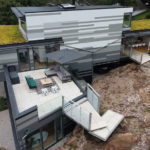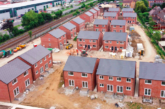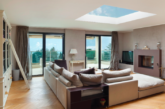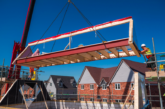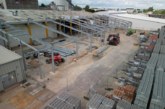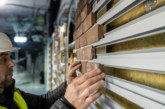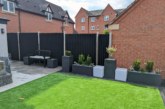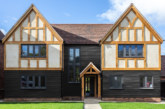Cedral Sidings discuss some of the things you need to consider when cladding your next project.
When choosing cladding options for a project it’s important to look at elements such as weather resistance and maintenance but it’s possible to get these benefits and also greatly enhance the overall aesthetic of the building.
In areas more exposed to the elements, houses need to stand up to more frequent and heavier rainfall which may start to wear away at the pointing if left unchecked.
Cladding on houses can provide a number of useful benefits. Primarily it protects the structural walls from moisture ingress and external temperature changes, but if the right cladding system is installed with insulation it can also help to regulate the temperature inside the house.
There is a wide range of cladding systems on the market designed to meet specific design brief challenges, from renders to traditional materials such as timber-based cladding through to more modern PVCu and fibre cement based systems.
The use of cladding systems can provide an additional protective layer to the exterior of a building. When installed correctly, a fibre cement cladding system prevents wind and rain from having a detrimental effect on a building.
Fibre cement panels are resistant to mould, rot and bacteria much like PVCu. The difference with fibre cement is that it is more thermally stable and less likely to warp – it also requires little maintenance beyond the occasional cleaning with soapy water.
Using fibre cement weatherboard cladding is also preferable to using materials that may have a much less comforting fire-resistance rating.
Cedral Facades for example have an excellent reaction to fire classification rating of A2-s1, d0. This means that in the event of a fire they will barely generate any smoke and will not spread fire.
When applying the finishing touches to a spectacular former gatehouse, in Scotland, Cedral fibre cement cladding was the optimum choice for both architect and homeowner.
Architect Graeme Andrew, of ataSTUDIO in Glasgow, was commissioned to design the family home in the village of Kilmocolm. Split over three levels, at the top of a rocky hill, it was a complex project built over a steel frame structure.
The two-year build was challenging but, the final piece of the jigsaw was a simple choice. Graeme and the homeowners opted for Cedral Click Woodgrain in the Mineral range.
The Cedral sidings gave a finish that was both in-keeping with the surroundings and with the modern design of the home.
Graeme said: “We like the colour choice with Cedral and the fixing method is well resolved for our style of building. We chose Cedral rather than stained cedar due to the low maintenance of the sidings and its reliability for not shrinking and expanding over the lifetime of the building.
“We have built a few houses clad in cedar and there has been more movement that expected as well as ongoing staining to maintain a good visual appearance – this seems to be an issue that we won’t have with Cedral.”

